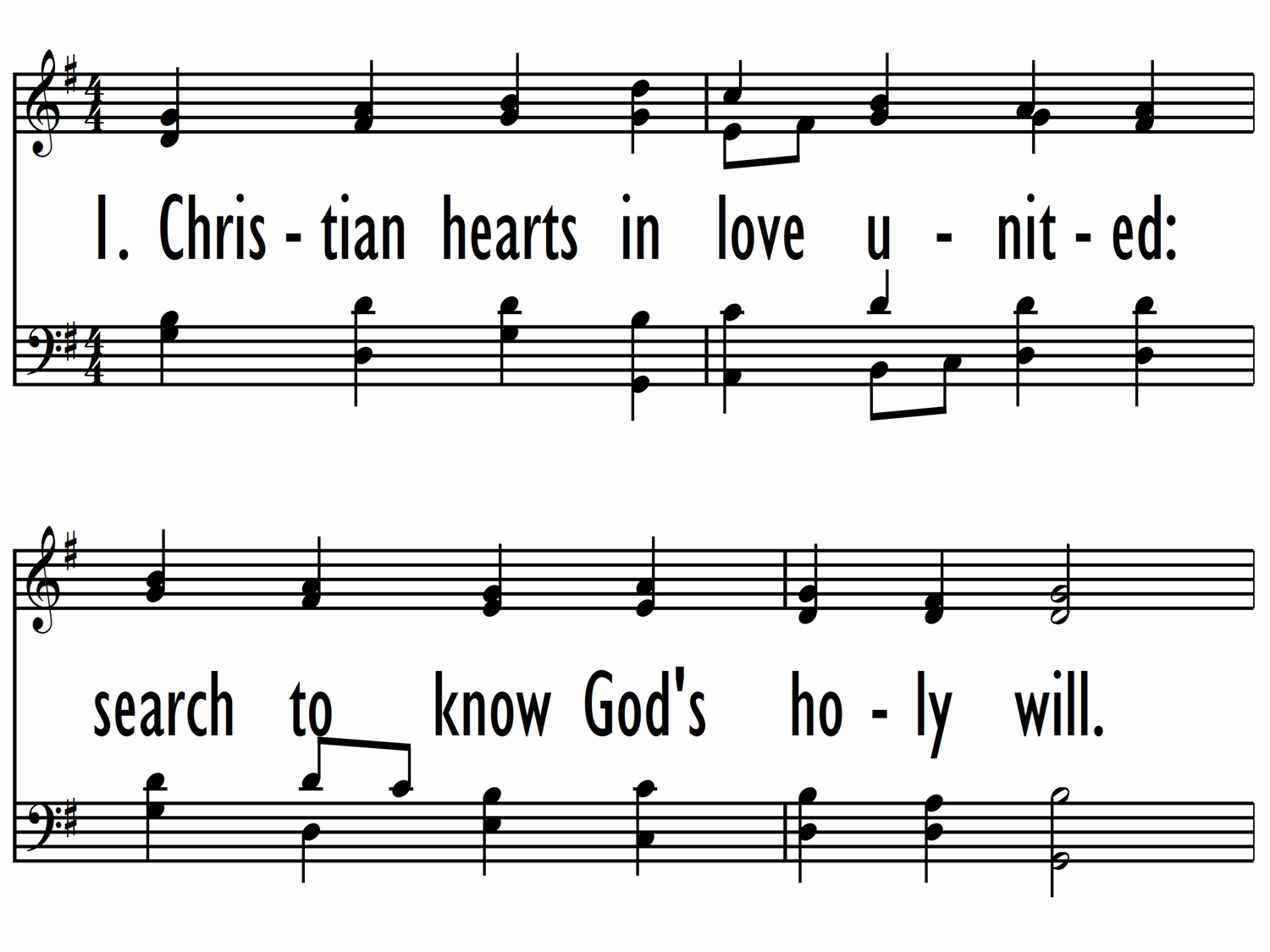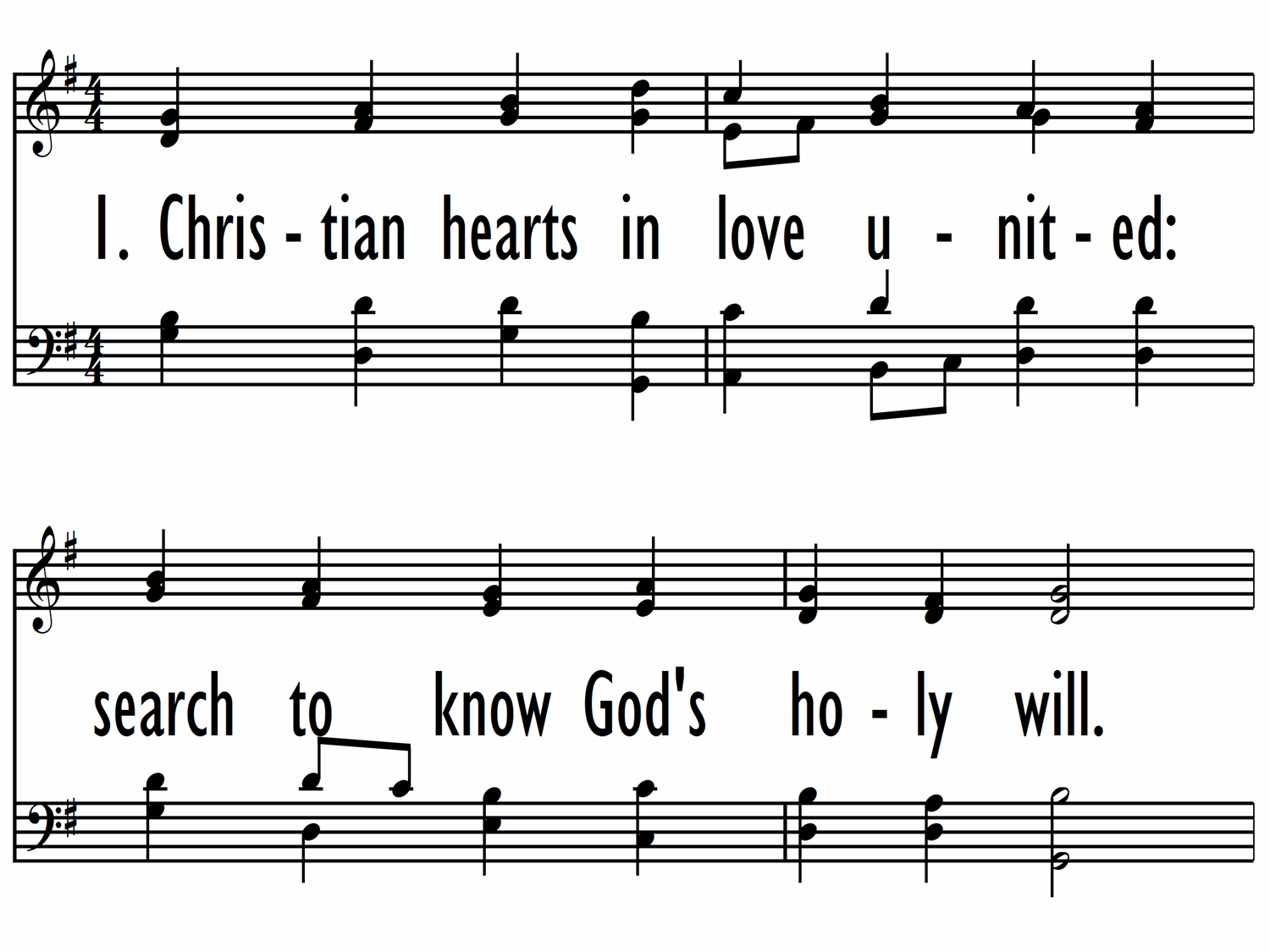- |
User Links
Christian Hearts in Love United
Hymn Information
- First Line
- Christian hearts in love united
- Author
- Nicolaus L. von Zinzendorf (1723)
- Text Source
- Tr. composite
- Tune Name
- O DU LIEBE MEINER LIEBE
- Tune Source
- <cite>Moravian Chorale Book</cite> manuscript, Herrnhut, 1735
- Topic
- Jesus Christ: Head of the Church · Jesus Christ: Light · Jesus Christ: Vine · Law of God · Unity in Christ · Unity of the Church
Copyright Information
- Text Copyright
- Public Domain
- Tune Copyright
- Public Domain
- Reprint/Projection Information
- Words and Music: The Words and Music are in the Public Domain; you do not need permission to project or reprint the Words and Music.
Full Text
Scripture References
Further Reflections on Scripture References
This distinguished text about the church's "communion of saints" proclaims that Christians live in union with Christ (st. 1), love each other (st. 2), and serve and witness in the world (st. 3).
Bert Polman, Psalter Hymnal Handbook
Confessions and Statements of Faith References
Further Reflections on Confessions and Statements of Faith References
It is vitally important that worshipers understand the role of God’s law among us. God gives his law to us, not so that we can earn his favor by full obedience, for even those converted to God cannot obey this law perfectly. Heidelberg Catechism, Lord’s Day 44, Question and Answer 114 says, “In this life even the holiest have only a small beginning of this obedience.” Instead, says Heidelberg Catechism, Lord’s Day 2, Question and Answer 3, through this law “we come to know [our] misery.”
Yet in their new life of gratitude, God’s children “with all seriousness of purpose, do begin to live according to all, not only some, of God’s commandments” (Heidelberg Catechism, Lord’s Day 44, Question and Answer 114). They measure their good works of gratitude as “those which are done out of true faith, conform to God’s law, and are done for God’s glory” (Heidelberg Catechism, Lord’s Day 33, Question and Answer 91).
In other words, though Christ has fulfilled the law for us, “The truth and substance of these things remain for us in Jesus Christ…[and] we continue to use the witnesses drawn from the law and prophets to confirm us in the gospel and to regulate our lives with full integrity for the glory of God according to the will of God” (Belgic Confession, Article 25). Therefore, the Ten Commandments with explanation are included in the third section, “gratitude,” (Lord’s Days 34-44) of Heidelberg Catechism.
Christian Hearts in Love United
Words of Praise
Assurance
Blessing/Benediction
Additional Prayers
Christian Hearts in Love United
Tune Information
- Name
- O DU LIEBE MEINER LIEBE
- Key
- G Major
- Meter
- 8.7.8.7 D


 My Starred Hymns
My Starred Hymns





